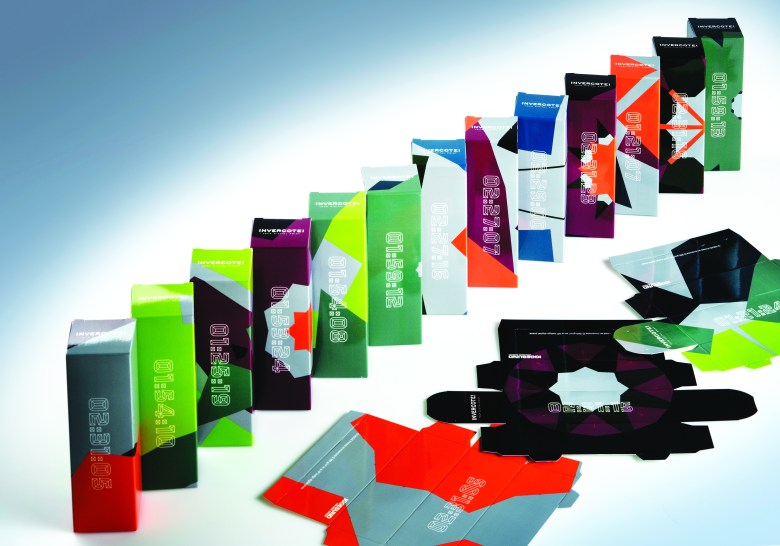
According to research outfit Smithers Pira, digitally printed labels and packaging had a value of US$13.4bn last year and that figure will climb.
We can expect strong growth in corrugated, carton, flexibles, and direct-to-shape markets. Digitally printed corrugated material will accelerate from a global value of US$1.44bn today to US$2.35bn by 2020.
Growth expectations for all formats of digital printing rate around 15 per cent per year and, with digital packaging platforms opening up possibilities for creating new revenue streams, everyone in print, packaging and signage has an opportunity to take advantage of the latest technology.
Digital print complements traditional analogue methods. For example, converters and display makers can expand their offering with prototyping, short-run, versioning, and customisation of boxes and displays. At the recent Fespa Expo, visitors saw a showcase of digitally printed corrugated applications that included shelf-ready and transit packaging boxes, pallet surrounds, promotional packaging, and POS displays, supported by like-for-like printing comparisons, samples and narratives.
The latest digital packaging platforms give brands and their design more chances to use their creativity in new ways. Exciting for them and potentially lucrative for print companies to position themselves to benefit from these advances.
They can also use digital print to provide hard to replicate brand protection features to packs and labels, aiding anti-counterfeit efforts. The capability of digital systems to impart variable information – like an item-specific QR code – onto a pack or label gives new security capabilities.
Run lengths and turnaround times continue to shrink. Packaging printers now look for more cost-effective solutions, responding to their clients’ demands for faster job turnarounds; versioning and variable data; just-in-time and on-demand printing; and reduced inventory costs.
Solutions grow
A number of machinery suppliers have seen this situation evolving and have developed solutions to address it.
EFI has already placed one of its Nozomi machines into the Australian market at Orora. Aiming for high-quality and high-speed, this digital LED press offers up to 75 linear metres per minute on substrates up to 1.8m wide. At a recent Orora open day, Brian Lowe, group manager for Paper and Cardboard at Orora Fibre Australia, said, “Variable print on this scale was not available in the past. I think markets will open up in randomisation, personalisation and identification, particularly in barcodes, QR codes and other data. Identification will be big.”
Press giant Heidelberg has developed its Primefire 106 inkjet system, which uses drop-on-demand inkjet technology powered by Fujifilm. The 70 × 100cm format press uses Heidelberg’s sheet transport system and integrates with Prinect workflow. Heidelberg says the Primefire 106 combines the best of both worlds: flexibility and versatility of digital printing and the reliability and precision of offset printing.
The HP Indigo 30000 digital press, a 75cm format machine using Indigo’s digital offset process, targets folding carton converters. HP lists advantages like zero setup, minimal waste, and easy versioning capabilities. Operators can use up to seven ink stations on the press and what HP claims as the widest digital colour gamut, reaching up to 97 per cent pf Pantone colours.
Durst uses its single pass technology in the Delta SPC 130 solution for the corrugated cardboard industry. Operators can configure this machine with up to six colour rows and it has a maximum printing width of 1285mm. It can print any length of corrugated cardboard or paper media of up to 12mm with a resolution of up to 800 dpi and at a print speed of up to 9350sqm/h. It offers what Durst calls a non-hazardous ink system and an IR/UV drying process.
Landa has finally beta tested its single-sided B1 press for folding carton, POP/POS and corrugated boxes. Claiming a higher throughput than any other digital sheetfed press, Landa claims its S10 press prints 6500 B1 sheets per hour on off-the-shelf substrates in thickness from 2.4-32 pt. (60-800μm).
With a crossover point of around 30,000 boxes and even higher when ganging jobs or adding variable barcodes, the company reckons the S10 provides a digital solution for more than half of all packaging jobs.
Screen continues to upgrade its Truepress Jet W3200. The latest model uses Screen’s moving-table flatbed platform. Its printheads jet 14-picoliter drops at up to 1000dpi quality for every print mode. Screen says the small drop size produces sharper image detail and smoother tonal ranges than other wide-format printers currently on the market. It also offers white ink; it comes equipped with six colours (cyan, magenta, yellow, black, light cyan and light magenta) plus two white ink channels.
Comment below to have your say on this story.
If you have a news story or tip-off, get in touch at editorial@sprinter.com.au.
Sign up to the Sprinter newsletter
